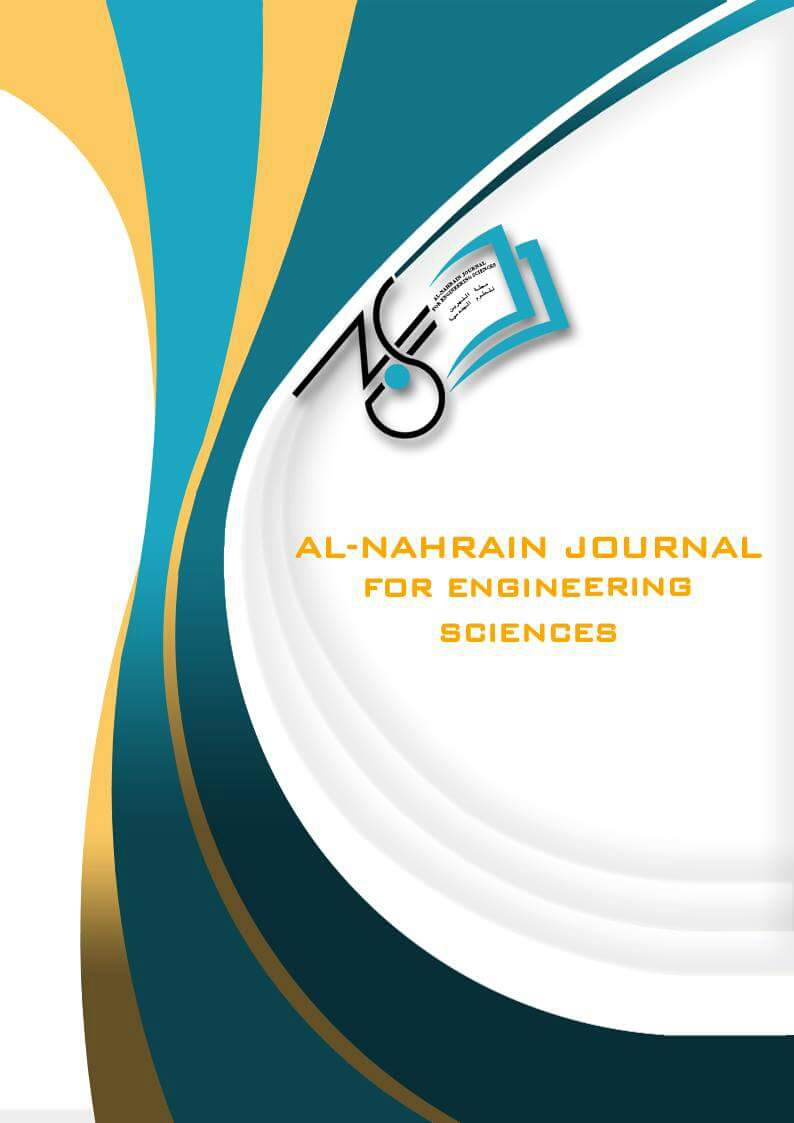Influence of High RAP Content with Different Types of Fillers on HMA Resistance for Moisture Damage for Different Layers
DOI:
https://doi.org/10.29194/NJES.27030271Keywords:
RAP, HMA, Moisture DamageAbstract
Hot mix asphalt embedded on "Reclaimed asphalt pavement"(RAP) has the advantages of high technology. Moisture damage is a concern in these mixtures at all service temperatures. Therefore, the performance of this mixture against moisture at all service temperatures was considered a target of this research study. In this way, the effects of humidity on the performance of varieties were investigated using experimental methods including tensile strength ratio (TSR). In the framework of this study, Four different ratios of RAP for each of the surface and bonding layers (10%, 15%, 20%, 25%) and (30,40,50,60)% were added to the hot asphalt mix (HMA) for the two layers respectively to study and find the content Optimal RAP for both layers RAP through Marshall stability and hygroscopic resistance of asphalt mixtures through moisture damage is examined. The ratio (TSR) of the mixtures containing the optimal RAP content is compared with the asphalt mixture without RAP for three fillers and for both layers. The results showed a slight decrease in the tensile strength of the (HMA) that does not contain RAP compared to the asphalt control mixtures containing the reclaimed pavement, where it was found that the percentages were slightly higher and still higher than 80%. The results indicate that in general, Although there are old materials in the hot asphalt mix (HMA) produced from RAP, which include aggregates and bitumen binder surrounding the aggregate particles, the performance of these mixtures and integrations against moisture damage. Because it contains this, it can have results with “hot asphalt mixtures” containing RAP for areas with damage without worry in addition to good natural curbs.
Downloads
References
G.Valdés, F.Pérez-Jiménez, R. Miró, A. Martínez, R. Botella, Experimental study of recycled asphalt mixtures with high percentages of reclaimed asphalt pavement (RAP). Construction and Building Materials, 2011. DOI: https://doi.org/10.1016/j.conbuildmat.2010.09.016
C. Jain., Wang, C. & C. Huang, Engineering properties of bituminous mixtures blended with second reclaimed asphalt pavements (R2AP). Road Materials and Pavement Design, 2009,pp 129 – 149. DOI: https://doi.org/10.3166/rmpd.10HS.129-149
N. Taylor, Life expectancy of recycled asphalt paving. Recycling of bituminous pavements (L. E. Wood, Ed.). ASTM ,1997, STP662, 3–15. DOI: https://doi.org/10.1520/STP35772S
J. Sullivan, Pavement recycling executive summary and report, Report FHWA-SA-95-060 from the Federal Highway Administration. Washington, D.C,1996.
O. Reyes, F. Pérez, R. Miro, & R. Botella, Proyecto fénix. Mezclas semicalientes, Proceedings del XV Congreso Ibero latin oamericano del Asfalto. Lisboa, Portugal,2009.
D. Decker. State of the practice for use of RAP in hot mix asphalt: Journal of the Association of Asphalt Paving Technologists, 66, 704,(1997)..
H.Silva, J. Oliviera, , & C. Jesus, Are totally recycled hot mix asphalts a sustainable alternative for road paving?: Journal Resources, Conservation and Recycling, 60, (2012). DOI: https://doi.org/10.1016/j.resconrec.2011.11.013
O. Reyes & J. Camacho, ). Inform Projector ING-730 Estudio del comport mien to de mescals asphaltic as Colombians al adicionarles RAP en differences percentages y Taman. Reporte de la Universidad Military Nueva Granada. Colombia.38 – 48, 2012.
W. Mengqi, W. Haifang, B.Muhunthan, & N. Kalehiwot, Influence of RAP content on the air void distribution, permeability and moduli of the base layer in recycled asphalt pavements. Proceedings of the 91st Transportation Research Board Meeting. TRB 2012.Washington, D.C., USA. 2012.
M. Sondag, B.Chadbourn, & A. Drescher, Investigation of recycled asphalt pavement (RAP) mixtures. Technical report MN/RC – 2002-15. Department of Civil Engineering, University of Minnesota. USA,2002.
P. Pereira ,J. Oliveira, & L. Picado-Santos, Mechanical characterization of hot mix recycled materials. International Journal of Pavement Engineering, 5 (4), 211 – 220,(2004). DOI: https://doi.org/10.1080/10298430412331333668
H. Hasan Joni & Y. Aqeel Alkhafaji, Laboratory comparative assessment of warm and hot mixes Asphalt containing reclaimed Asphalt pavement,(2020). DOI: https://doi.org/10.31185/ejuow.Vol8.Iss2.164
ASTM International. (2011). Annual book of ASTM standards. West Conshohocken, PA.
R. E. SCRB, (2003). Standard Specifications for Roads and Bridges.” Section R/9, Hot-Mix Asphaltic Concrete Pavement.
ASTM D6926 - 10. (2010). Standard practice for preparation of bituminous specimens using Marshall apparatus, ASTM.
ASTM D6927 - 15, (2015). Standard Test Method for Marshall Stability and Flow of Asphalt Mixtures 1. i:1–7, doi: 10.1520/D6927-15.2.
ASTM D6307 - 10, (1999). Asphalt Content of Hot-Mix Asphalt by Ignition Method 1. 04: 6–10, doi: 10.1520/D6307-10.2.
Iraqi Standard Specification, , "Lime That Used in Building", No 807,( 1988).
National Lime Association, (2003).
H. Yunas. Ahmed ,A.mahmood Othman &A Abdolhalem. Mahmoud, Effect of using waste cement dust as mineral filler on the mechanical properties of hot mix asphalt,(2009).
Iraqi Standard Specification, "Portland Cement", No.5, (1984).
Hassan Y. Ahmed, Ayman Othman&Afaf A. Mahmoud, Effect Of using waste cement dust as a minaral filler on the mechanical properties of hot mix asphalt, (2009).
ASTM D4867M-09, Standard Test Method for Effect of Moisture on Asphalt Concrete Paving Mixtures. ASTM, No. of pages: 5. , (2014).
Charoentham, N., & Macharoen, P. (2017). A Study of Moisture Damage in Warm Mix Asphalt Concrete with Reclaimed Asphalt Pavement. Journal of the Eastern Asia Society for Transportation Studies, 12: 1458-1476.
Al-RousanT., Asi I., Al-Hattamleh O., Al-Qablan H. ,( 2008). "Performance of Asphalt Mixes Containing RAP", Jordan Journal of Civil Engineering, Volume 2, No. 3.
Downloads
Published
Issue
Section
License
Copyright (c) 2024 Zainab Malik, Alaa Hussen Abed

This work is licensed under a Creative Commons Attribution-NonCommercial 4.0 International License.
The authors retain the copyright of their manuscript by submitting the work to this journal, and all open access articles are distributed under the terms of the Creative Commons Attribution-NonCommercial 4.0 International (CC-BY-NC 4.0), which permits use for any non-commercial purpose, distribution, and reproduction in any medium, provided that the original work is properly cited.














